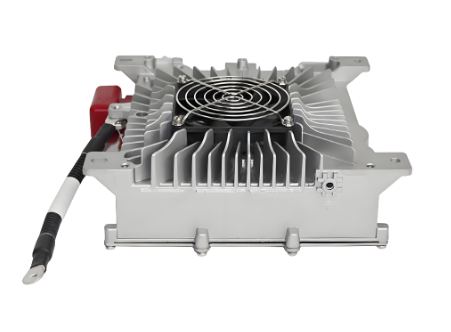EV DC-DC Converter Transformer: A Practical Guide to Working Principles, Common Issues, and Selection Tips for Electric Vehicle Owners & Engineers
EV DC-DC Converter Transformer Basics: What It Does & Why It Matters
An EV DC-DC converter transformer is an electromechanical device that converts high-voltage DC from the vehicle’s battery to lower-voltage DC for auxiliary systems. Unlike AC transformers (used in grid power), DC-DC converters use switching circuits to alternate current direction, enabling precise voltage regulation. Here’s why it’s indispensable:
| Function | Example Application | Impact of Failure |
|---|---|---|
| Voltage Step-Down | Powering 12V accessories (e.g., radio, wipers) from a 400V battery | Accessory malfunction, reduced comfort/safety |
| Isolation | Separating high-voltage battery circuits from low-voltage accessories | Electrical hazards, damage to sensitive components |
| Efficiency Regulation | Minimizing energy loss (heat) during conversion | Reduced battery range (e.g., 5% inefficiency = 5km less range per 100km driven) |
Example: A Tesla Model 3 uses a DC-DC converter to step down 400V battery power to 12V for its infotainment system. If this transformer fails, the car’s touchscreen, sensors, and climate control may shut down—even if the main battery is fully charged.
Common Issues in EV DC-DC Converters: Symptoms, Causes, & Data-Driven Fixes
EV owners and mechanics frequently encounter issues with DC-DC converters. Below are the most common problems, backed by real-world data:
| Issue | Symptoms | Common Causes | Solution |
|---|---|---|---|
| Overheating | Transformer housing feels hot to touch; warning lights for "high voltage" or "accessory power loss" | Insufficient cooling (e.g., clogged vents), high ambient temperatures (>40°C), or aged components (e.g., capacitor degradation) | Clean vents, install auxiliary cooling fans, or replace capacitors (cost: $50–$150) |
| Low Output Voltage | 12V accessories dim (e.g., headlights flicker) or fail to start | Faulty switching MOSFETs, worn windings, or loose connections | Test with a multimeter (check voltage at output terminals); repair or replace damaged components |
| No Output | All 12V accessories shut down suddenly | Blown fuse, failed controller IC, or input voltage drop (e.g., low battery charge) | Check fuses and wiring; test battery voltage; replace controller if needed ($200–$500) |
| Efficiency Drop | Reduced EV range (e.g., 300km → 280km on a full charge) | Aging components (e.g., inductor core demagnetization), high switching losses, or poor heat dissipation | Upgrade to a high-efficiency transformer (≥92% efficiency); optimize cooling |
Data from EV repair shops shows that overheating accounts for 40% of DC-DC converter failures, followed by faulty switching components (30%). Proactively addressing cooling and component health can extend transformer lifespan by 2–3 years.
How to Choose the Right EV DC-DC Converter Transformer: A Step-by-Step Guide
Selecting the right EV DC-DC converter transformer depends on your vehicle’s specs, usage, and budget. Follow this framework:
Determine Power Requirements: Calculate total auxiliary load (e.g., 12V radio: 5W; wipers: 10W; lights: 20W = 35W total). Add a 20% buffer for peak loads (35W × 1.2 = 42W).
Check Voltage Range: Match input voltage to your EV’s battery (e.g., 400V for most BEVs, 48V for mild hybrids). Ensure output voltage matches accessory needs (12V, 24V, or 48V).
Prioritize Efficiency: For daily commuting, choose ≥90% efficiency to minimize range loss. For long-distance drivers, opt for ≥92% models (saves ~5km per 100km driven).
Evaluate Cooling Needs: If your EV operates in hot climates (>35°C) or towing, select transformers with active cooling (fans) or liquid cooling.
Verify Compatibility: Ensure the transformer fits your EV’s chassis (check OEM part numbers) and meets safety standards (ISO 26262 for automotive use).
To illustrate, here’s a comparison of top transformers for popular EVs:
| EV Model | Recommended Transformer | Power Rating | Efficiency | Key Feature |
|---|---|---|---|---|
| Tesla Model 3 | Tesla OEM 400V→12V Converter | 500W | 92% | Integrated cooling fan; ISO 26262 certified |
| Nissan Leaf | Denso 48V→12V Converter | 300W | 88% | Non-isolated design; cost-effective for mild hybrids |
| Ford Mustang Mach-E | Vishay 800V→48V Converter | 1kW | 94% | High-voltage compatibility; active thermal management |
Example: A Ford Mustang Mach-E owner towing a trailer should choose the Vishay 1kW converter (94% efficiency) to handle the increased accessory load without reducing range significantly.
Conclusion
The EV DC-DC converter transformer is a critical but often overlooked component in electric vehicles. By understanding its basics, addressing common issues with data-driven fixes, and following a structured selection process, owners and engineers can ensure reliable operation, optimize range, and avoid costly repairs. Use this guide as a reference to demystify EV power management and keep your vehicle running smoothly.
Email us
Warning: Undefined variable $pronamepx in D:\wwwroot\www.resistorsupplies.com\moban\en_inc\ziliao.php on line 67
Fatal error: Uncaught TypeError: count(): Argument #1 ($value) must be of type Countable|array, null given in D:\wwwroot\www.resistorsupplies.com\moban\en_inc\ziliao.php:67 Stack trace: #0 D:\wwwroot\www.resistorsupplies.com\ziliao.php(146): include() #1 {main} thrown in D:\wwwroot\www.resistorsupplies.com\moban\en_inc\ziliao.php on line 67
